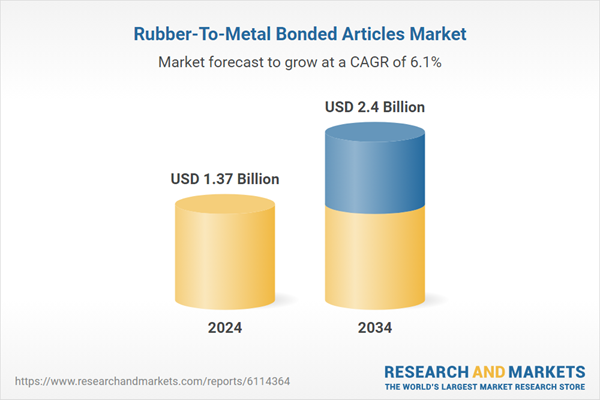As regulations tighten, especially around emissions and vehicle safety, manufacturers are leaning into advanced bonding solutions to meet evolving standards. The aerospace industry is also expanding its use of these bonded parts in critical structural and functional areas. Additionally, sectors such as construction, healthcare, and electronics are creating new pathways for application, signaling a diversified growth pattern. Innovations in bonding technologies, especially with cyanoacrylate adhesives - which already command over 40% of the market - are providing a further lift. However, rising raw material and energy prices pose challenges, particularly for smaller market players. This may accelerate consolidation efforts, as larger firms look to integrate and stabilize their supply chains vertically.
The engine mounts and vibration isolators segment generated USD 440.3 million in 2024 and is projected to grow to USD 800.9 million by 2034, growing at a CAGR of 6.2%. These components are critical across automotive and industrial machinery applications, where maintaining structural stability and minimizing engine-related vibrations are essential. Their relevance is heightened in both electric and hybrid models, where manufacturers prioritize reduced weight and improved NVH (Noise, Vibration, and Harshness) characteristics.
In 2024, the automotive segment held the largest market share at 43.3%, owing to the extensive usage of bonded components like suspension bushings, anti-vibration systems, and exhaust brackets. Market expansion in regions such as India, Germany, China, and the United States has led to increased demand for high-performance, durable components. Emerging vehicle technologies are reshaping product requirements, pushing manufacturers to develop more integrated, efficient parts that align with updated safety and emissions standards.
China Rubber-To-Metal Bonded Articles Market generated USD 114.3 million in 2024 and is forecasted to grow at a CAGR of 6.5%, to reach USD 213.4 million by 2034. Despite a dip in imports, the region remains the largest global consumer, with local demand continuing to rise. Favorable trade policies and infrastructure investment are driving a shift toward domestic production, allowing China to move closer to self-reliance in this industry. Meanwhile, the United States experienced significant market growth during the same period.
Leading players in the Rubber-To-Metal Bonded Articles Market include Continental AG, Hutchinson SA, Trelleborg AB, Sumitomo Riko Co., Ltd., and Vibracoustic GmbH. To strengthen their position in the rubber-to-metal bonded articles market, top companies are focusing on several core strategies. They are heavily investing in research and development to create advanced, lightweight bonding solutions that cater to the evolving needs of electric and hybrid vehicle platforms. Strategic mergers and acquisitions are being pursued to gain better control of supply chains and expand market share. Key players are also enhancing their manufacturing capabilities and leveraging automation to improve efficiency. Furthermore, many are entering long-term contracts with OEMs to ensure consistent demand and strengthen their global presence.
Comprehensive Market Analysis and Forecast
- Industry trends, key growth drivers, challenges, future opportunities, and regulatory landscape
- Competitive landscape with Porter’s Five Forces and PESTEL analysis
- Market size, segmentation, and regional forecasts
- In-depth company profiles, business strategies, financial insights, and SWOT analysis
This product will be delivered within 2-4 business days.
Table of Contents
Companies Mentioned
- 3M Company
- BASF SE
- Bridgestone Corporation
- Continental AG
- Cooper Standard
- ElringKlinger AG
- Freudenberg Group
- H.B. Fuller Company
- Henkel AG & Co. KGaA
- Hutchinson SA
- Parker Hannifin Corporation
- Sumitomo Riko Company Limited
- Trelleborg AB
- Vibracoustic
- ZF Friedrichshafen AG
Table Information
| Report Attribute | Details |
|---|---|
| No. of Pages | 225 |
| Published | July 2025 |
| Forecast Period | 2024 - 2034 |
| Estimated Market Value ( USD | $ 1.37 Billion |
| Forecasted Market Value ( USD | $ 2.4 Billion |
| Compound Annual Growth Rate | 6.1% |
| Regions Covered | Global |
| No. of Companies Mentioned | 15 |









